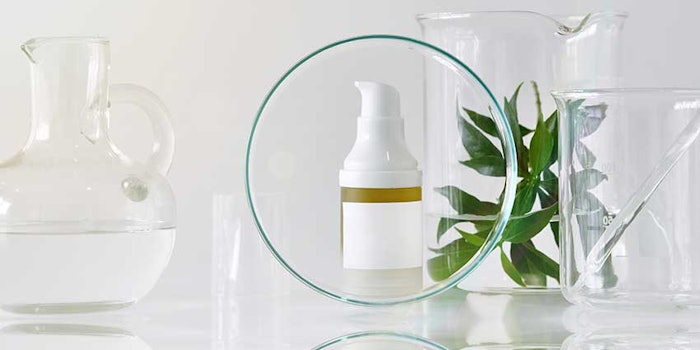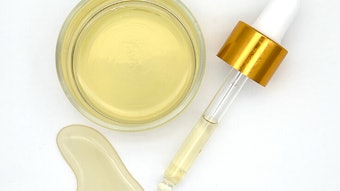
 Products that engage multiple senses are becoming more commonplace; so, too, are natural cosmetics and their metaphorical aftershocks. Belinda Carli, director of the Institute of Personal Care Science, talks greenwashing, natural sunscreen and how naturals stack up in a landscape where all senses are considered in this exclusive interview with in-cosmetics Latin America.
Products that engage multiple senses are becoming more commonplace; so, too, are natural cosmetics and their metaphorical aftershocks. Belinda Carli, director of the Institute of Personal Care Science, talks greenwashing, natural sunscreen and how naturals stack up in a landscape where all senses are considered in this exclusive interview with in-cosmetics Latin America.Carli specializes in training formulators on innovative and compliant product developments; her books on cosmetic formulation span from basic to advanced topics, including organic formulations and brand management. Carli also serves as the in-cosmetics Group’s official technical advisor.
in-cosmetics Latin America (IC): Regarding the sensuality of natural cosmetics, is it possible for natural products to obtain sensory properties similar to those obtained in synthetic products?
Belinda Carli (BC): Increasingly, yes. Raw material suppliers have been quick to respond to the ongoing popularity of natural products by providing more materials to mimic the sensory profile of synthetic materials. There are still some limitations on performance, but sensory is one area that is increasingly achieving consumer demands for aesthetically pleasing properties.
IC: So, the sensory aspect can be considered as an obstacle for the success of the natural products?
BC: No. There are still some limitations for other functional ingredients, e.g., film formers and styling fixatives, where natural alternatives don’t perform the same as synthetic offerings. But sensory is one that has been done well and can be mimicked using natural ingredients.
IC: What are the ingredients that can be considered as natural?
BC: A natural ingredient is one which comes directly from the source with only minimal, if any, physical changes incurred. Natural ingredients differ from certified organic products in that their source is natural but not certified organic. … Naturally derived ingredients are produced from natural substances using only permitted chemical processing methods without the residue of synthetic chemicals. These ingredients can be correctly identified in marketing material or on labels as being truly sourced from natural substances or derived from nature.
Processing methods that can be used and can still provide an ingredient defined as “derived from natural sources” include methods such as alkylation; condensation; hydrolysis; hydrogenation; esterification or transesterification; fermentation; hydration; neutralization; oxidation/reduction; saponification; and sulfation (note this is not the same as sulfonation). Common examples include guar and xanthan gum (fermentation); vegetable glycerin (usually hydrolysis/saponification by product); alkyl glucosides (derived from coconut oil fatty acids and corn starch); cetearyl esters (e.g., cetearyl olivate, derived from olive and palm oil fatty acids); and sorbitan esters (e.g., sorbitan olivate, derived from olive fatty acids and sorbitan polyalcohols).
IC: Another frequent concern on the cosmetic market is about the use of surfactants. Is there any way for surfactants to be added into natural products formulations?
BC: Yes, there is an increasing number of choices here as well—including polyglucosides (e.g., coco-glucoside, decyl glucoside), sodium cocoyl glutamate, sodium olivoyl/cocoyl aminoacids fructoside and sodium coco sulfate.
IC: Is it possible to formulate efficient natural sunscreen products?
BC: That is an interesting question. The short answer is yes but the zinc oxide and titanium dioxide used [can be perceived as] not truly natural; however, they are approved for use in natural and organic cosmetics by certifiers and assumed/considered to be natural by consumers. If you are talking with a chemist, however, they’ll be quick to point out these UV filters are not truly natural. Nevertheless, they are approved and accepted for use in natural/organic products, and varying grades are now available to improve dispersion, skin feel and UV protection in finished products. I have a video on this, too.
IC: The "greenwash" strategy is a very common issue nowadays. What is this practice about?
BC: Greenwashing is used to imply that “green” products are safer or more mild than synthetic products or synthetic ingredients but this isn’t true. It is, however, appealing and believable to consumers, and the amount of misinformation on the internet about chemical ingredient safety only adds to the confusion. Greenwashing can also be used to imply that natural products are more biodegradable than synthetic products—but this isn’t necessarily true either (yet) because they are green materials and “from” nature, it’s very believable to a consumer.
IC: Legally, is greenwash permitted?
BC: No. It is illegal to promote a product using misleading or deceptive claims in any country. Even if the company says they didn’t know any better or it was not their intention to mislead, if the overall message is misleading, then it is considered misleading or deceptive. However, since this doesn’t usually pose any significant safety risk, it is low on the regulators’ radar to police unless it becomes a complaint from a consumer or another company. While it is so widespread among companies to support the "biodegradability" and "safety" perception to consumers, it would be very hard to police. If a claim was to impact consumer safety, though, the regulators would be quick to act.
in-cosmetics Latin America was held from Sept. 19-20, 2018, in São Paulo.










